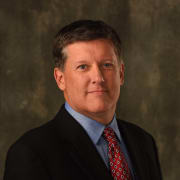Unforced Errors Plague Tiger Woods in Opening-Round 74 at U.S. Open

PINEHURST, N.C. — Tiger Woods handled the hard part, hitting the ball beautifully off the tee during the opening round of the U.S. Open. It’s the rest of his game that let him down.
A 4-over-par 74 at Pinehurst No. 2 saw the three-time U.S. Open champion make just two birdies and hit only nine greens in regulation. Too many unforced errors left him having to try and play catch-up on a course that doesn’t yield many opportunities.
“It's not where I wanted to be on a lot of the holes,” Woods said. “It just ended up being that far away because I wasn't as sharp as I needed to be.”
This has been a common issue for Woods, 48, who is playing just his fourth tournament of the year and only his third round since he made the cut at the Masters, where he shot 82-77 on the weekend.
At the PGA Championship last month, Woods shot 72-77 to miss the cut.
The lack of competitive golf has him in a quandary as he noted the balance between doing too much and not enough.
Woods, whose five-year exemption for winning the U.S. Open expired after last year, is in the field on a special exemption given by the United States Golf Association. This is the first time he has played the tournament since 2020.
“I'm physically getting better as the year has gone on,” he said. “I just haven't been able to play as much because I just don't want to hurt myself pre (tournament), then I won't be able to play in the major championships.
“It's pick your poison, right? Play a lot with the potential of not playing, or not playing and fight being not as sharp.”
Woods chose the latter and that’s where he is coming up short.
Despite hitting 12 of 14 fairways, Woods rarely gave himself good birdie chances.
He birdied the par-5 10th—his first hole—when he hit a nice pitch from a scruffy lie at the 610-yard hole. He also birdied the other par-5, the 5th, after hitting the green in two from 260 yards and two-putting.
Tiger gets one back.
— U.S. Open (@usopengolf) June 13, 2024
He has birdied both par 5s today. pic.twitter.com/lYCyHXzOuM
But other than the par-4 15th where he had a 15-footer for birdie that he missed, Woods had few other chances. He was mostly trying to scramble after missing a green or putting from long distance.
He ranked outside the top 130 in the 156-man field in strokes-gained approach to the green, typically the hallmark of his game.
“I didn’t hit my irons particularly well,” he said. “Didn’t putt that great. Drove it on a string all day. Unfortunately I just didn’t capitalize on it. I was somewhat conservative in some of my end points. Then again, I didn’t hit the ball very well, either. It added up to quite a bit of distance away from that flag.”
Woods said that aspect of his game was a work in progress. He came to Pinehurst for a practice round last week and then played nine holes each day on Sunday, Monday and Tuesday.
“It wasn't as good as I'd like,” he said. “I was pretty one-dimensional early in the week, which is interesting. I was drawing the ball a lot. Now I'm cutting the ball a lot. Welcome to golf.”
And that can cause problems at Pinehurst, which presents some very challenging and sloping greens. Woods, who teed off at 7:29 a.m., noted the challenge—which resulted in a round that took more than 5 and a half hours.
“This golf course is all about the greens,” said Woods, who trailed leader Patrick Cantlay by nine shots. Cantlay shot 65, 5 under par. “The complexes are just so difficult and so severe that, I think 1 under par is only in fifth. There aren't that many scores that are low.
“It's hard to get the ball close. In most golf courses you play, you hit shots into where it's feeding off of slopes into flags ... collecting. Here everything is repelling. It's just hard to get the ball on top of the shelves.
“You know if you miss it short side, it's an auto bogey or higher. Being aggressive to a conservative line is I think how you need to play this particular golf course.”
